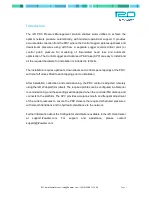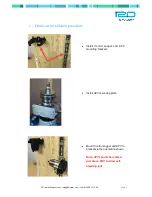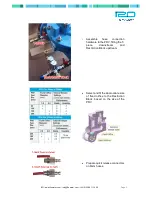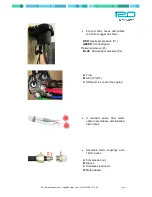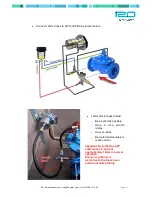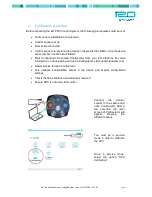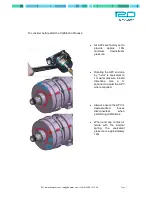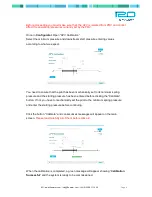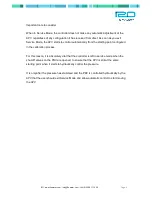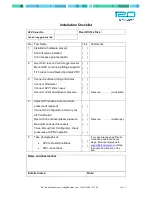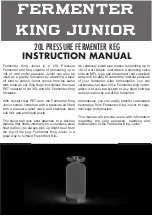
i2O
|
www.i2owater.com
|
|
+44 (0) 2380 111 420
Page 10
iii.
Commissioning procedure
1. Ensure the APV is connected to the PRV but with the control space tap either
shut.
2. Open the upstream and downstream taps, this will pressurise the i2O APV and
pipe work. Check for leaks on both the hoses and the fittings at this point,
rectifying or repairing as necessary.
3. When you see pressures recorded on the i2O Configurator (“Live Data” Screen)
that are within acceptable limits for the location, slowly open the control space
tap.
4. The pilot will now take control of the valve and it is likely that some change in the
downstream
pressure
could
be
registered
at
this
point.
Note: Different sized valves can react to changes in their control pressures at
different speeds, small valves can react almost instantly and can be very variable
whereas larger valves tend to move more slowly but be more stable.
5. Allow the pressures to stabilise before making any adjustments. Given the
variability of installation, it is possible for set pressures to be +/- 2meters from the
target pressure required. If this occurs, then adjust the end cap, using the C
spanner in the method described earlier, either in a clockwise or anti clockwise
rotation
to
achieve
the
target
start
pressure.
Do not change any other settings at this point; only adjust the APV end cap if
necessary.
6. At this stage, the pilot will work as a conventional hydraulic pilot and will attempt
to maintain the set fixed outlet pressure.
7. In order for the system to begin controlling, this must be correctly configured in
oNet, the oNet settings will take effect the next time the device dials up.
It is
recommended that the installer forces a dial-up to check the behaviour before
leaving site, as control settings could immediately change pressure
.
8. When active control is implemented and the user is satisfied with the correct
operation of the i2O system, then it is important that service mode is deactivated
before disconnection of the device from the Configurator.
Installation of the PRV Control System is now complete. If you experience any
difficulty or require assistance at any stage please email photographs of the
installation to
, stating the name and location of the site and
device serial number.


